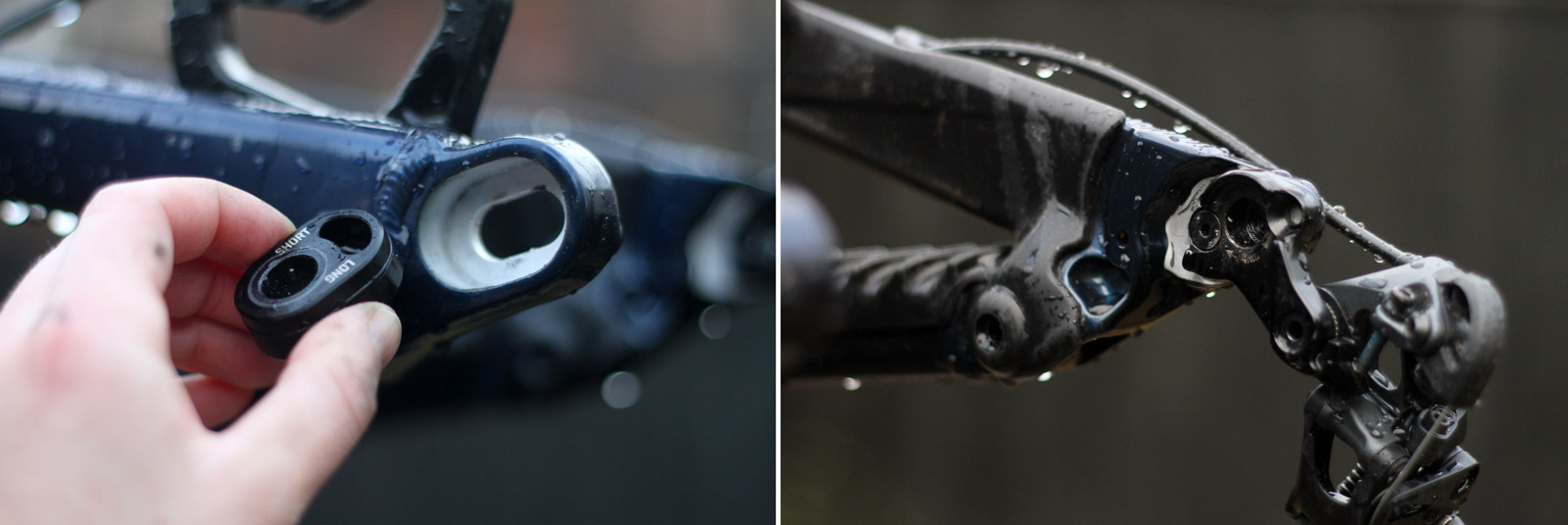These past few months I’ve been testing the new GT Force Carbon Enduro Bike, a 160mm travel scaled-back version of the GT Fury DH Bike, featuring the same high-pivot linkage tuned suspension platform. I will admit, the first few rides were not flattering, of either my riding or the bike’s handling. The reason was primarily due to my personal struggle in setting up the RockShox ZEB Ultimate fork that, as a now (weep) under-conditioned rider of 58 kg, I find excessively stiff. Bigger isn’t always better; if it were my bike, I’d have swapped out the ZEB for the 35mm stanchion RockShox Lyrik which I feel offers a far more comfortable ride.
Thankfully, I have been able to put my issues with the ZEB to one side in order to focus on how the bike handles overall. Which is pretty well, actually. At 5′ 4″ tall the 430mm reach on the small frame is exactly where I want it on a 29er, the 63.5° head angle is plenty slack enough, and the 78° seat angle puts me in a refreshingly commanding position for seated pedaling. Here’s my experience.
Review: 2022 GT Force Carbon Pro LE
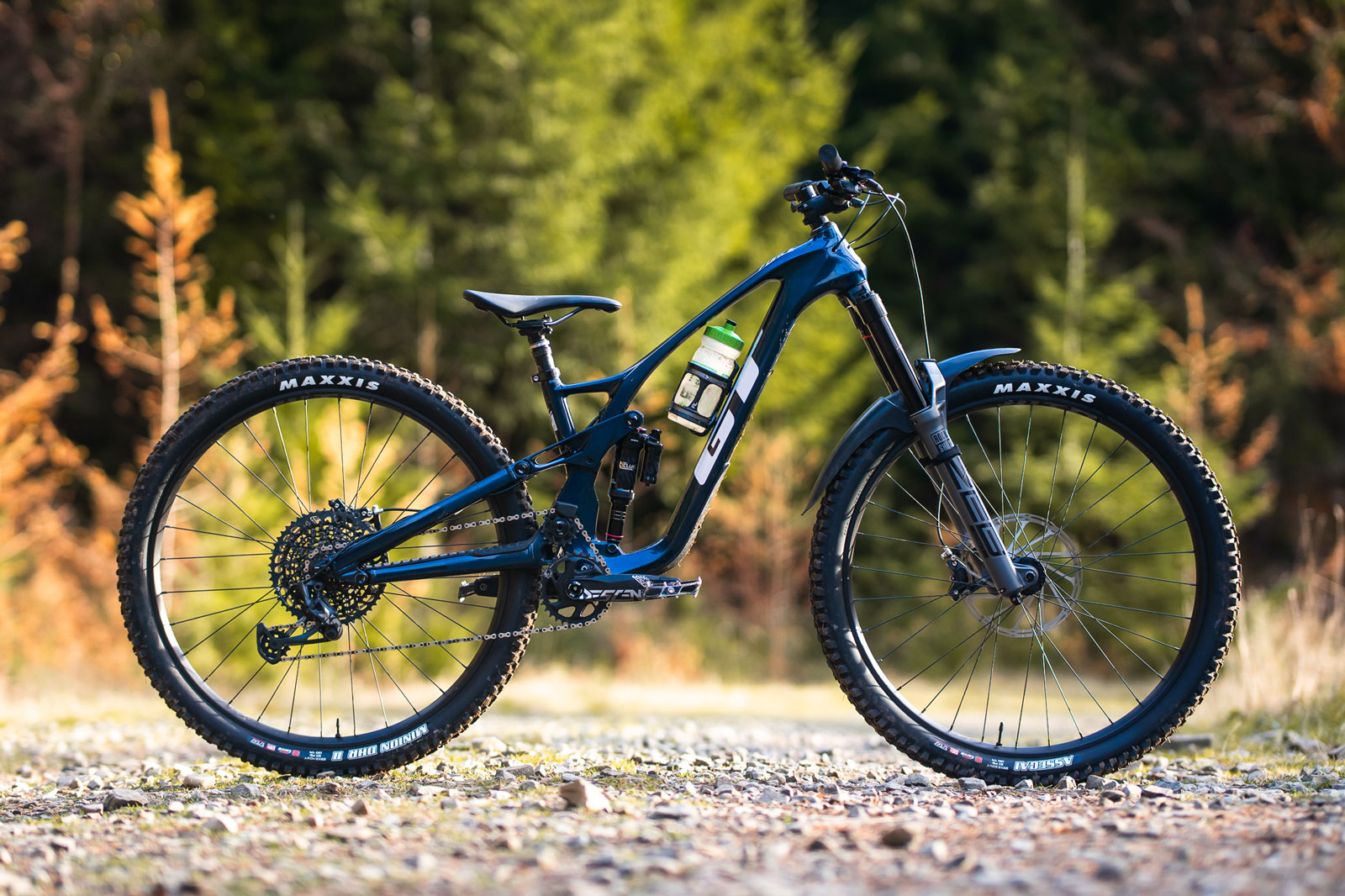
First, a quick overview. Piloted at the Enduro World Series by the likes of Noga Korem and Wyn Masters, the Force Carbon is GT’s out-and-out enduro race bike with 29″ wheels. A 170mm travel fork is paired with a 160mm rear end delivered via the high- (or mid-, perhaps) pivot LTS platform borrowed from the GT Fury Downhill Bike. While the suspension is still managed by a Horst-Link pivot, the increased height of that main pivot was the big news for 2022 with the new layout allowing the rear axle to enjoy a majority rearward path.
In an interview with Product Developer, John Barreira, we heard that GT wanted to retain the pedal efficiency, nimbleness and overall ride quality of the Force, while also bringing in the ground-hugging, bump-eating downhill prowess of the Fury. We tackled the technical aspects of the 2022 Force in our previous launch coverage; here, we’ll focus on the spec quality and the ride experience.
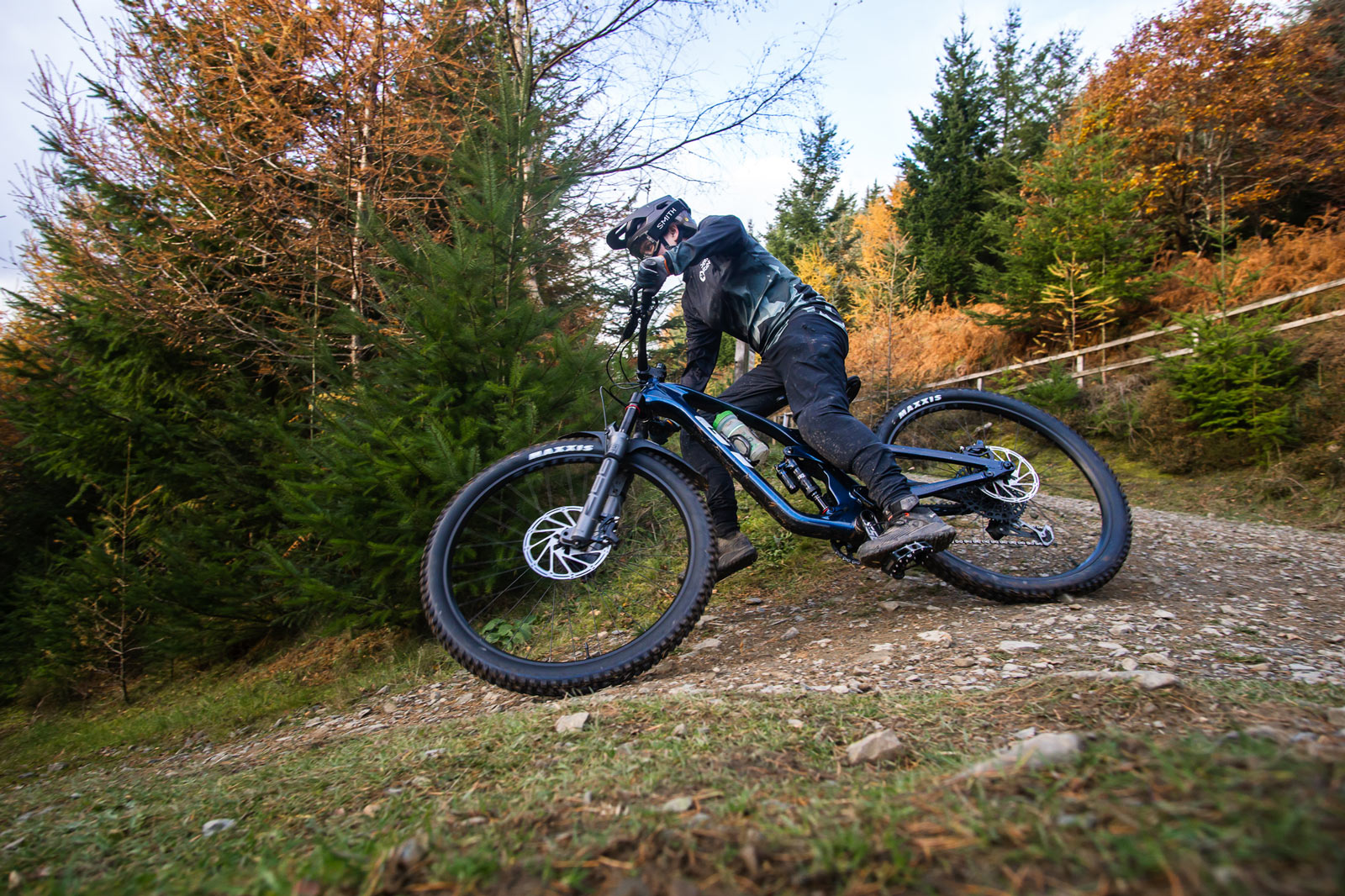
Initial Set Up
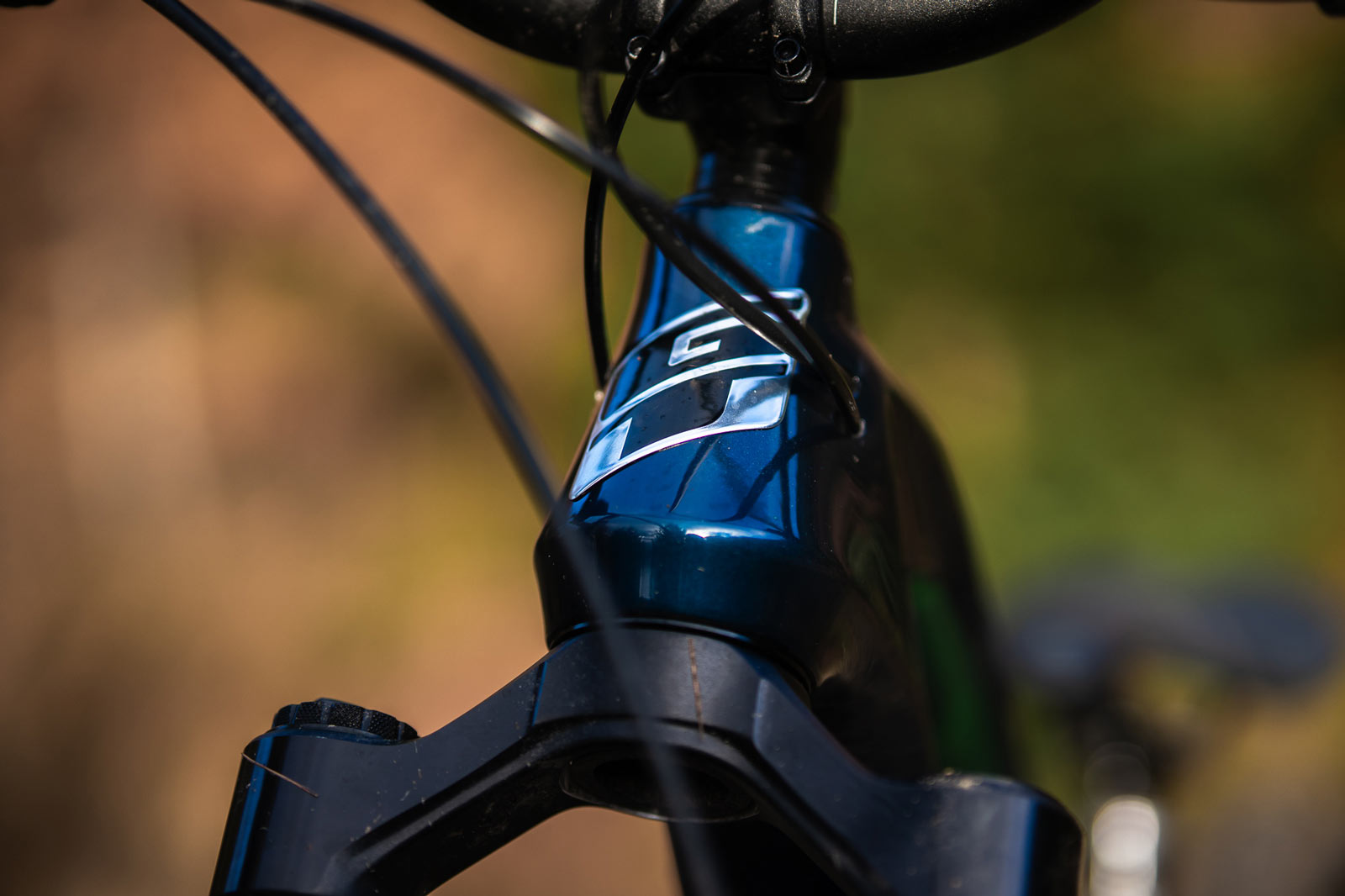
GT sent us the Force Carbon Pro LE model which retails at $6,300 USD. This is the top-of-the-range model separated from the more affordable $3,800 USD Carbon Elite and $5,100 USD Carbon Pro siblings by componentry only; they all run on the same frame with a carbon front end and an alloy swingarm.
Our Pro LE model boasted the RockShox ZEB Ultimate fork, the Super Deluxe Ultimate air shock, SRAM Code RSC 4-piston brakes with a 220mm rotor at the front wheel and a 200mm rotor out back, a SRAM GX/XO1 combination 12-speed drivetrain. While I applaud GT for the appropriate choice of brakes (i’m a long-standing fan of the Code RSC) and large rotors, the EXO+ casing Maxxis tires seemed a little out of place given this rig’s hard-hitting intentions; a Double Down casing tire in the rear, at least, would’ve been ideal.

The bike arrived with the stem at the very top of the stack. Combined with the 30mm rise alloy bar, that made for a very high front end. One lap into the test, I realized that needed to come down a fair way to encourage a more forward riding position. Happily, there was heaps of surplus steerer tube to allow for ample ride height tuning.
I did hit a few stumbling blocks in setting up the Force Carbon. The ZEB fork required a not insignificant number of rides to get familiar with, but with sufficient trial and error, I was able to make it comfortable enough to get me to a point where my rides weren’t solely about the battle between me and the fork. I settled on 27% SAG (yes, that’s softer than usual), with 2 clicks of low speed compression damping, high speed compression fully open, and two clicks of rebound damping.
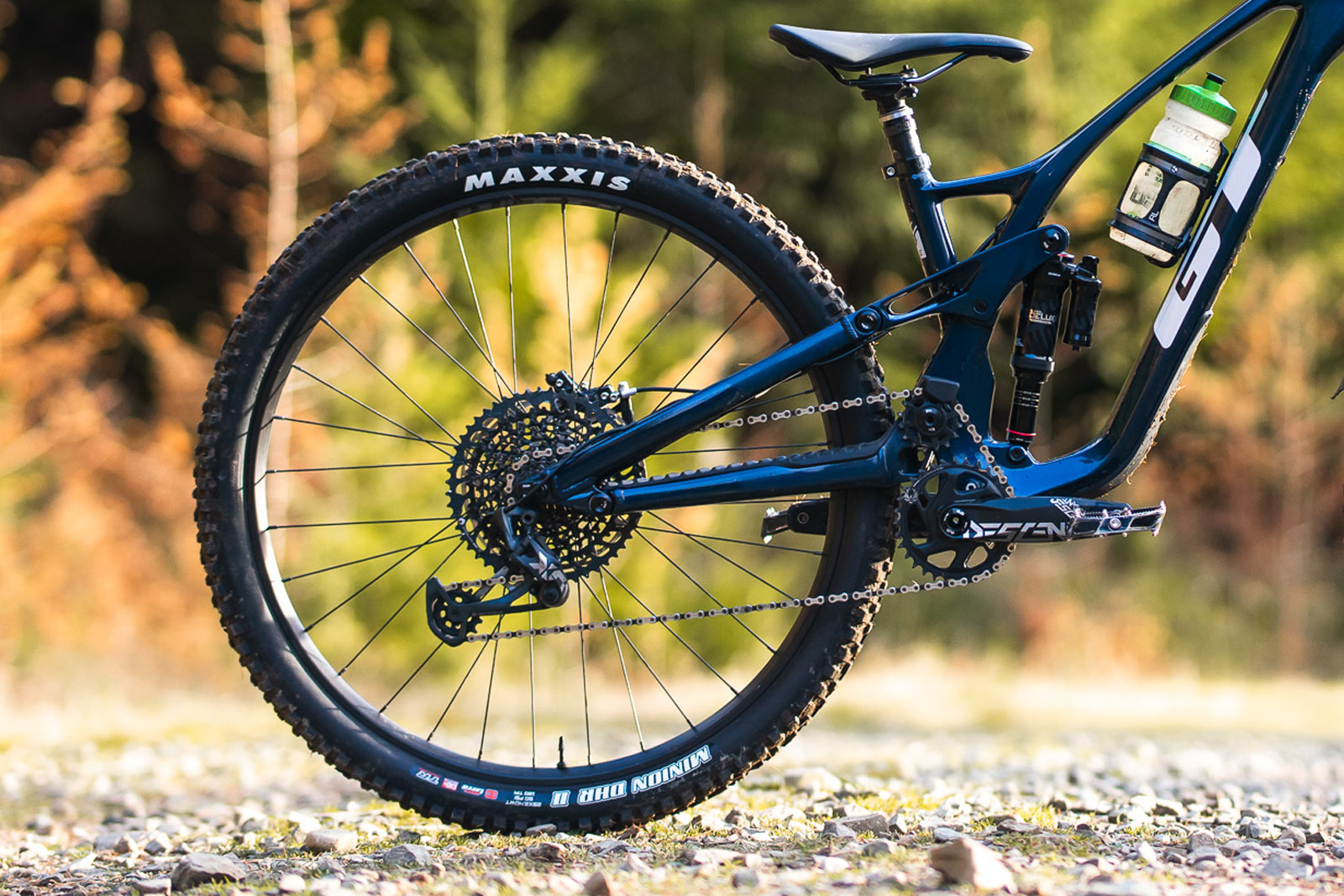
In the rear, I went for 30% SAG with both rebound and compression damping fully open. With these settings, I felt the rear end was too easily bottomed-out on bigger hits, and almost a little sluggish in situations where the trail demanded frequent pumping. It was incredibly stable at speed and very well composed through rough trail chatter, but it lacked a certain playfulness. Following a conversation with the GT frame engineer, I learnt they actually recommend a 25% SAG for this bike. I quickly rectified the situation, and had a much better riding experience thereafter.
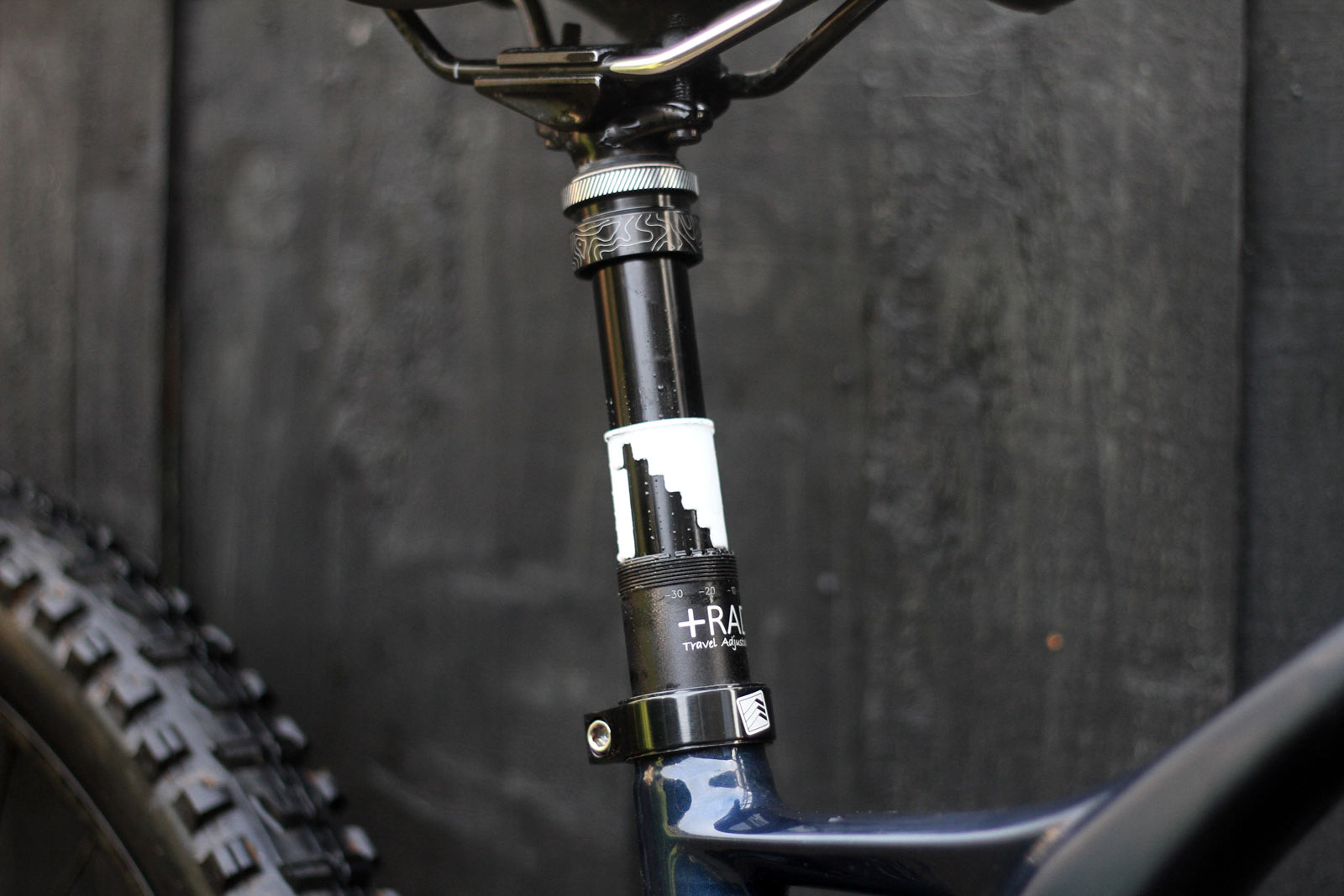
Also worth mentioning here is the +RAD adjustable dropper seat post. The small frame tested here was meant to come with a 150mm travel post. I didn’t actually measure it (oops), but it was definitely much longer than that. A mistake at the warehouse, perhaps. That said, I was able to reduce the travel by a maximum of 30mm to a more sensible height using the dropper post’s travel adjust shim. This is a tool-free, mess-free job that can be done at the trail side on your first ride.
Overall Ride Impressions
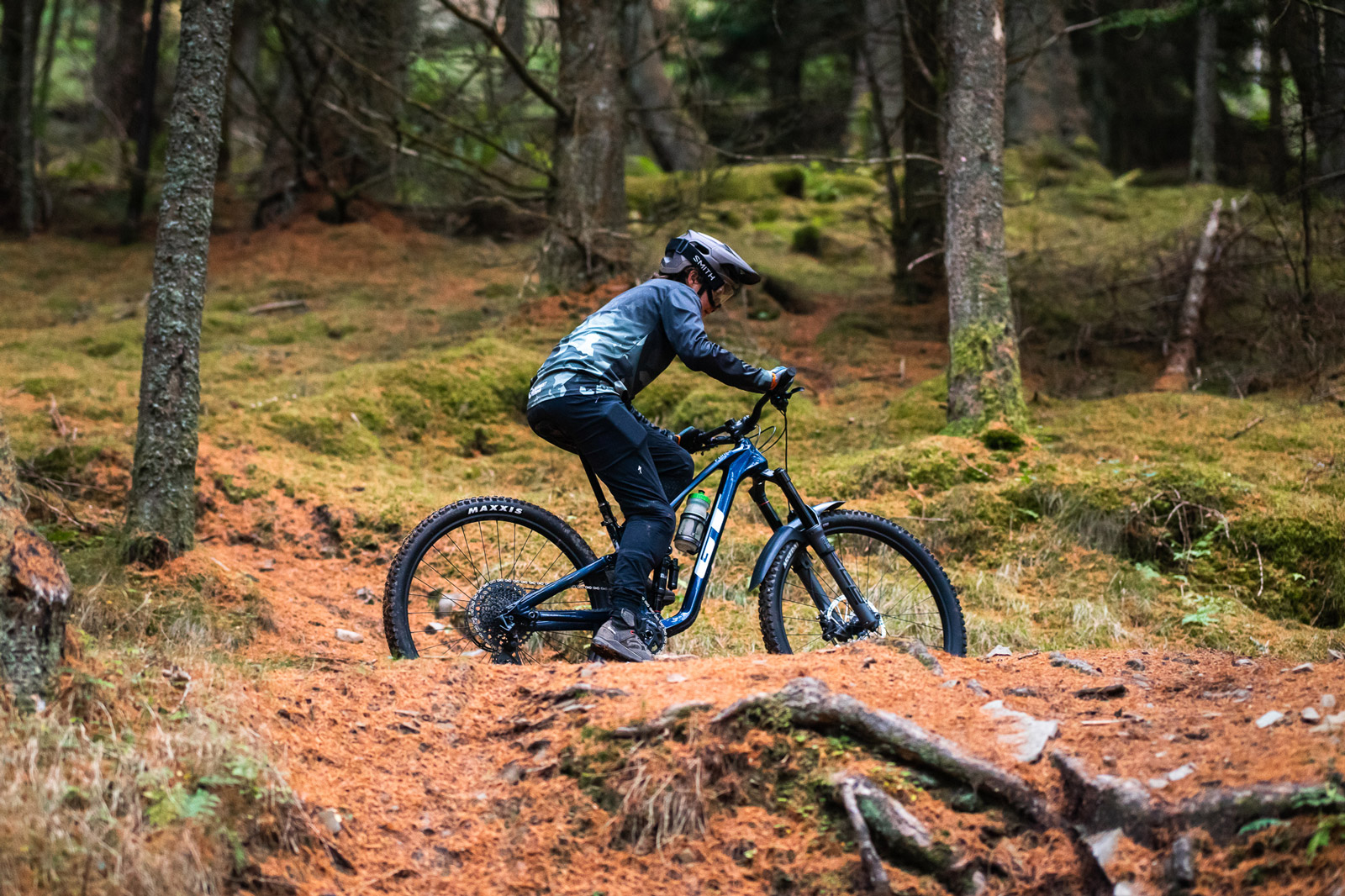
Although the GT Force Carbon’s intentions are very much downhill-focused, it’s also important to comment on how it carries itself against the force of gravity. None of my testing of this bike was shuttle-assisted, so each turn was very much earned. Happily, I felt the bike pedaled supremely well. The trend toward steeper seat tube angles is certainly not a fad; I was very grateful for the 78° seat tube angle and the very direct pedaling position it afforded. An almost negligible amount of pedal bob rendered the Super Deluxe shock’s lock-out lever redundant.
What about the idler? Yes, I was able to hear it. And yes, my pals pedaling alongside me were able to hear it too. The additional friction can be felt through the pedals, though it is very subtle. I have to say, though, it didn’t bother me much at all. I soon forgot about it, and didn’t get the impression that I was loosing any significant amount of Watts through the additional pulley. In my experience, rotational weight is far more important in that department.
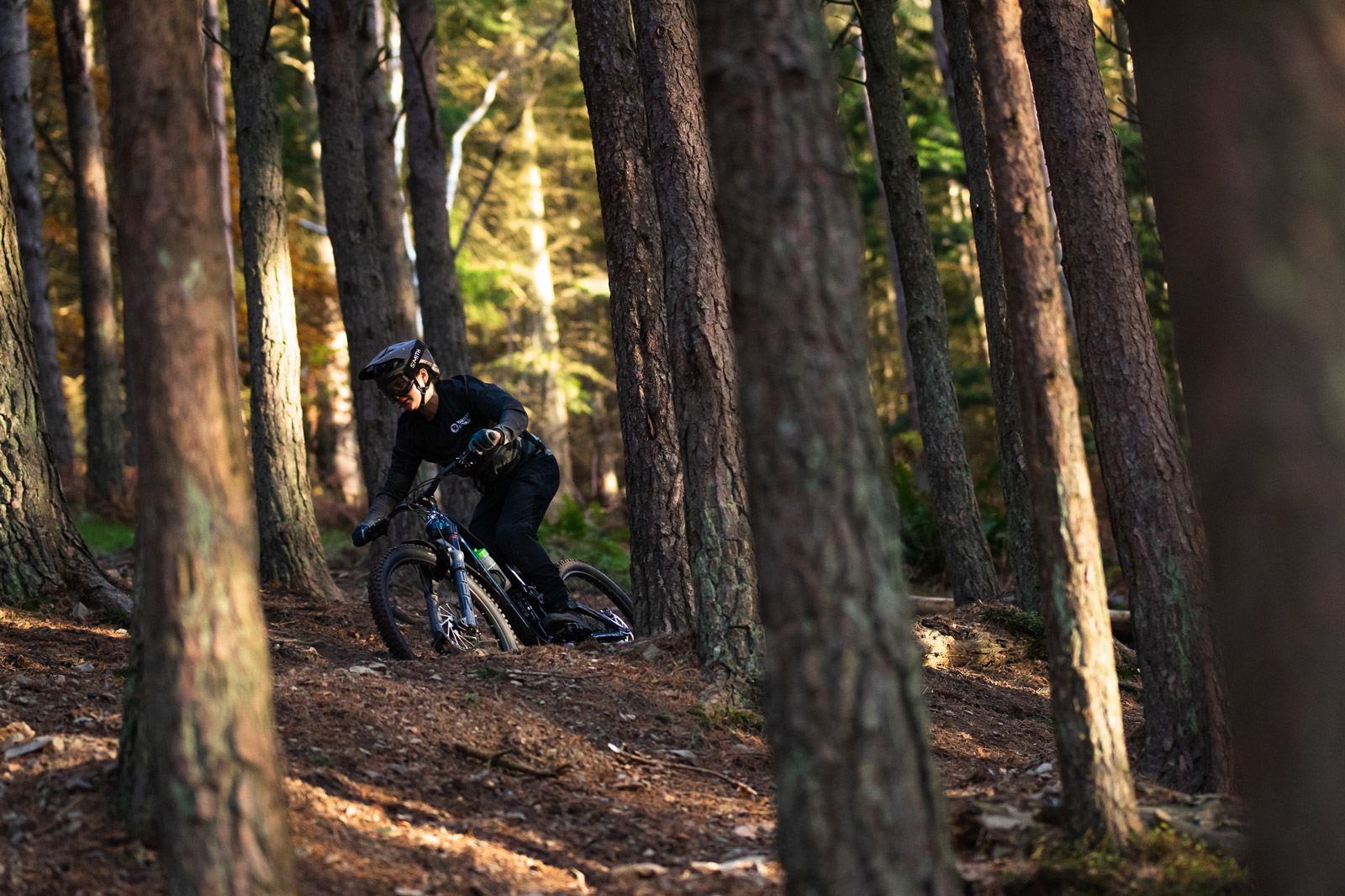
Onto the bike’s forte… descending.
The GT Force Carbon has adjustable length stays, by virtue of a flip-chip at the dropouts. I chose to spend much of the test period in the short chainstay position; 435mm. That’s primarily because the local enduro tracks are a bit fiddly in nature – we have few super fast tracks to choose from, and most of the riding from the door is on narrower hand-cut tracks that weave through dense plantation forests.
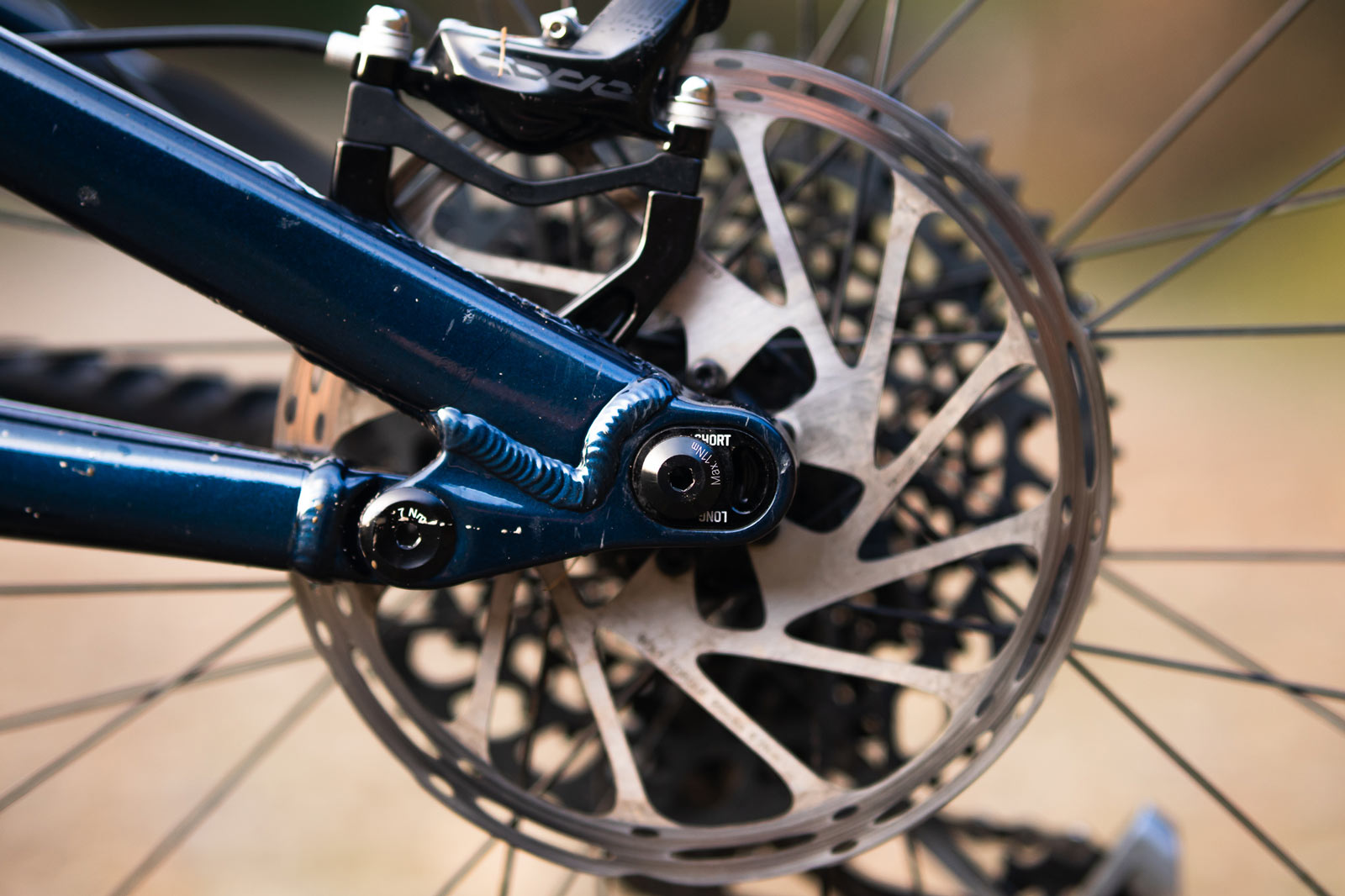
The bike’s 29″ wheelset and 63.5° head tube angle did occasionally feel like a little bit too much bike for those trails, making for a bit of a wrestling match in some of the tighter corners. Those who are partial to the occasional endo turn won’t have the same complaint. In that regard, the Force isn’t the most nimble of bikes I’ve ridden.
That said, we do have a few downhill tracks on which the bike’s slack geometry feels more at home. In a no-brake straight-line affair, the Force Carbon is utterly indifferent to whatever roots and rocks may be littering the trails. The rear end’s composure through the rough stuff was evident, with the rearward axle path brought about by the high-pivot suspension clearly doing its job, and doing it well.
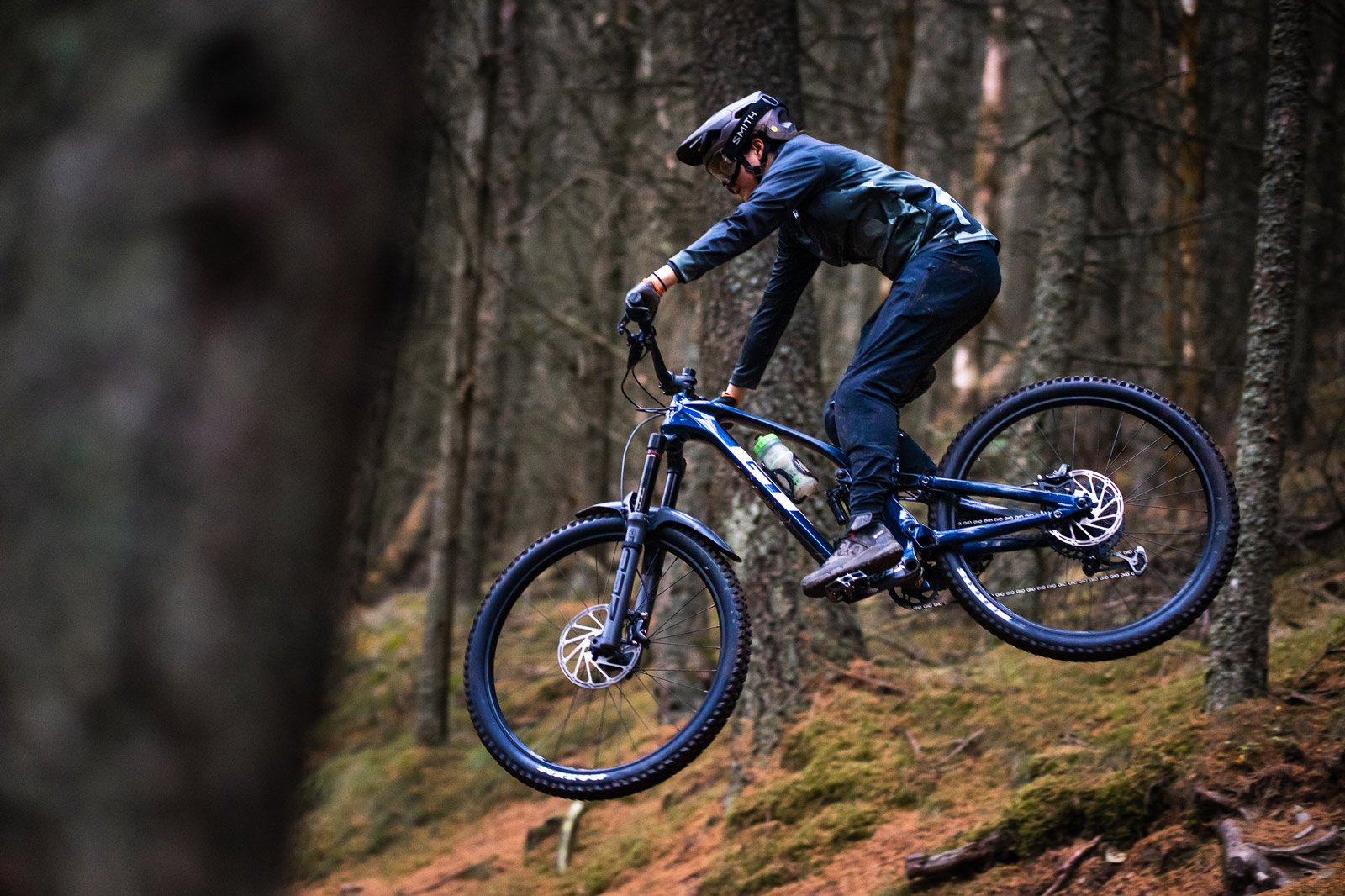
It’s not the highest of high-pivot bikes we’ve seen, and that rear axle path certainly isn’t 100% rearward. The chainstay length grows by a maximum of 10mm as the bike is pushed through its travel, allowing the wheel to track up and backwards as it hits obstacles. I wouldn’t go so far as to say I can actually feel it extending on the trail, but the bike’s stability at speed really is very impressive, making fast runs of the local downhill tracks feel just that little bit less risky.
Through open, bermed corners, the bike feels particularly well-mannered, daring you to brake just that little bit later each time. Support through the rear-end is plentiful, though I’d argue for a light rider like myself, the shock tune is probably a little harsh. This is particularly true for the rebound side; to achieve the 25% SAG, I need to run a relatively low air pressure, which generally doesn’t make for very fast rebound speeds. On the odd occasion, my feet did momentarily (and thankfully, uneventfully) depart from the pedals, likely due to the shock packing down a little and thus becoming more harsh on consecutive hits.
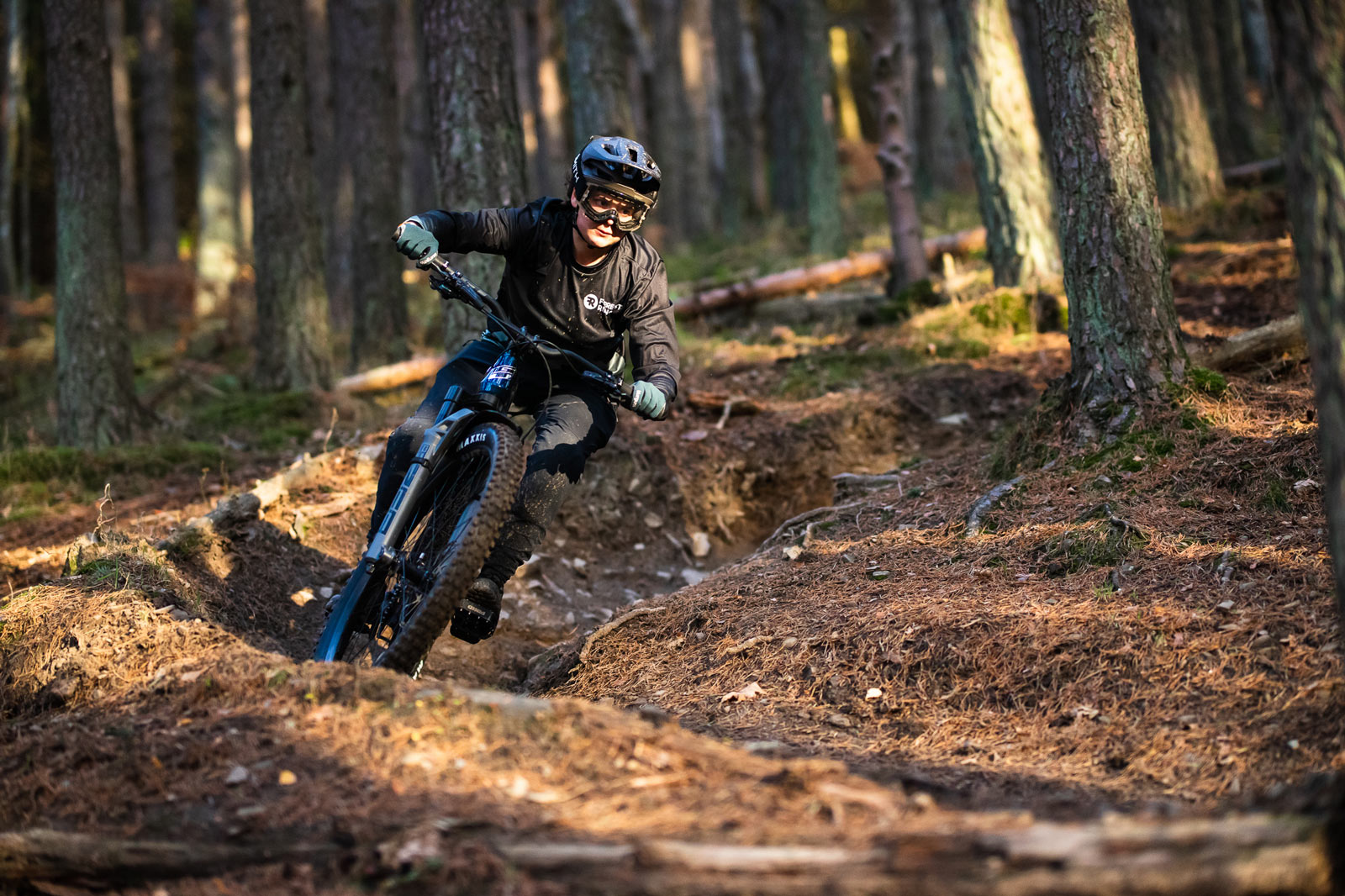
Pedal kickback is, as GT claim, entirely absent. It was never felt on the trail, even under heavy and sustained rear wheel braking, nor did I find any evidence of it off the bike. How did I test for that? I pushed the bike through its rear wheel travel by pushing down on the saddle. No matter which cog of the 12 speed cassette the chain was on, the cranks never rotated backwards.
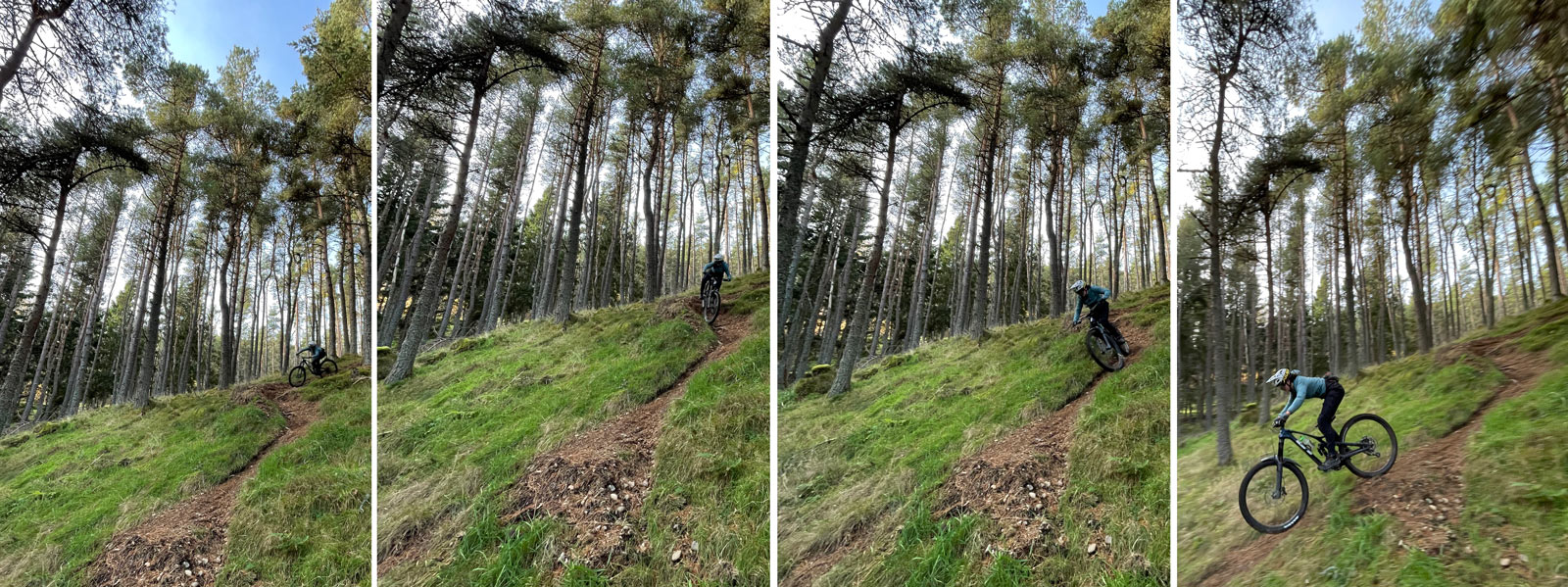
What about the long chainstay position?
Well, to my complete surprise, I actually preferred the ride feel of the GT Force Carbon in its longer 445mm stay position. I felt it encouraged a more forward, aggressive riding position, with more active weighting of the front wheel. Of course, that’s how we should ride any bike to get the best performance out of it, but I really felt the GT Force Carbon demanded it of me significantly more than any other bikes I’ve ridden recently.
Switching Positions
Switching between the short and long chainstay positions is a fairly straightforward process. On the non-driveside, the flip chip simply slides out of its housing; the tightened axle is the only thing that retains it. On that side, the other consideration is of course the brake mount. GT have a neat solution for this which I consider well-executed.
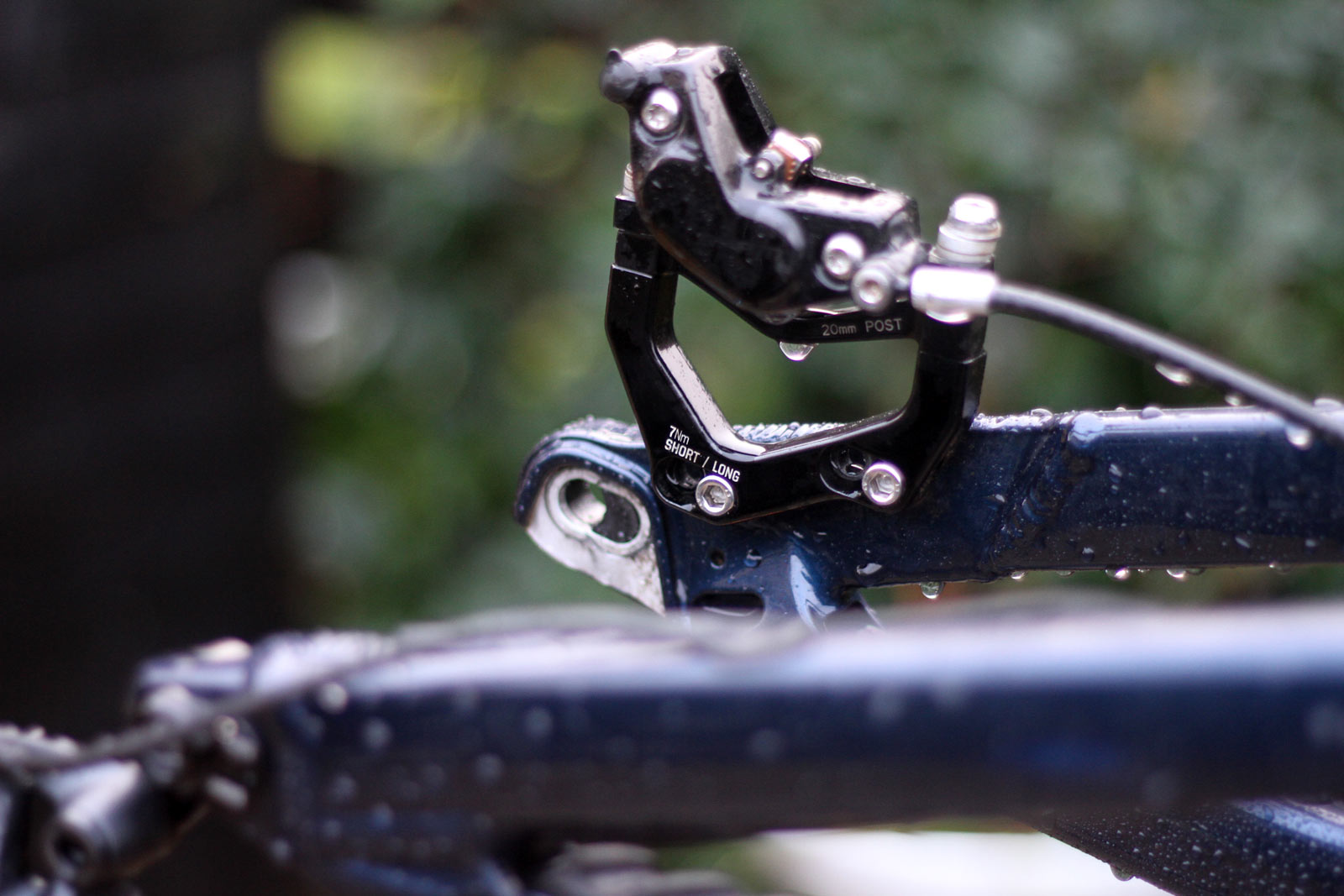
The brake bracket actually has four holes, amounting to two possible mounting positions corresponding to the long and short stay positions. When flipping the orientation of chip, you need only loosen the mounting bolts, slide the bracket and caliper along, and tighten them again. I did need to feed a little extra brake hose through the frame when switching to the long position.
On the driveside, the mech hanger position needs to be swapped too. Moving it to its most rearward position was quick and simple.
Would I recommend the GT Force Carbon?
Yes, but only really to the kind of rider who spends the majority of their time on higher speed trails. GT took a lot of cues from the Fury Downhill bike when designing the new Force Carbon, and you certainly feel that on the trail. The bike felt more at home on fast-paced rough downhill tracks than it did on the slower speed hand-cut enduro trails. Frequenters of Bike Parks will gain confidence from the Force Carbon’s stability at speed. Though, in the absence of a gondola or shuttle, the bike’s efficient pedaling platform won’t put you off heading up for another lap.
Pricing & Availability
The GT Force Carbon Pro LE retails at $6,300 USD and is available now from GT dealers worldwide.
